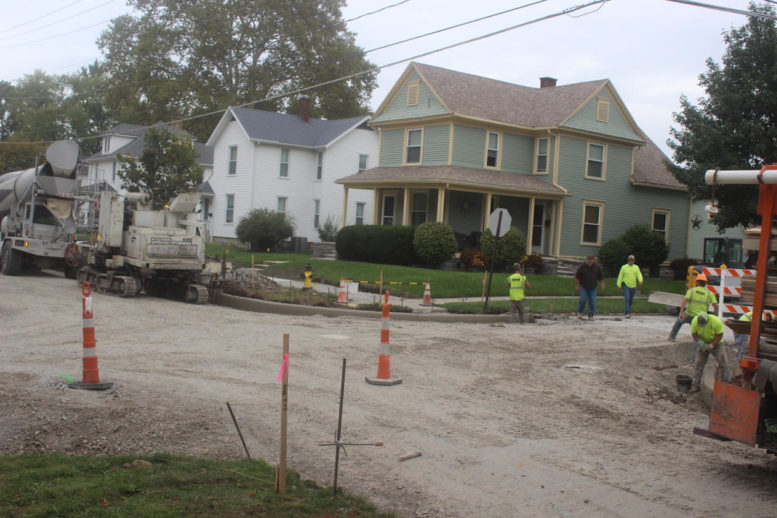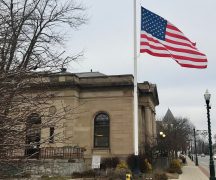When the American Rescue Plan was passed by Congress and signed into law by President Joe Biden last March, the U.S. Department of the Treasury wanted the cities who were getting part of the $1.9 trillion national relief package to submit their first project and expenditure reports to them by Oct. 31. Ohio cities got $6.6 billion to spend on future projects and needs from the COVID-19 pandemic.
But local governments have not been processing this huge amount of spending for their needs fast enough, and the Treasury Department has now moved the first deadline for the spending back to the end of January 2022. A study published by the Brookings Institution in September found that the 20 large American cities received a total of $1.3 billion and had only committed to spending $7.4 billion, or 18%, through the end of July.
Why are most of these cities — which for years have complained that the state and federal government had cut financial help to them drastically through the years — unable to assess their needs and get back to the feds with some answers in seven months?
Many reasons, from deciding whether paying off debt or investing in things like affordable housing is appropriate, or whether they’d rather add some parks to the city landscape, for instance. About 40% of that spending budgeted so far is for revenue replacement and 20% for low-income community needs.
While waiting on Washington, cities have also been wondering if they should invest money on infrastructure — like say, rebuilding the lakefront port in Cleveland — or if funding for that might be included in the infrastructure bill.
“In turn, many big cities are telling Treasury: We’ll get back to you on that,” the Brookings researchers wrote.
As for their plans, Ohio cities are all over the map. Some are just pushing the funding through city council and emphasizing debt reduction and law enforcement investment. Others are holding public meetings to gather input. Still others are indeed postponing decisions to see what happens next as current spending bills are finished off by Congress.
But most are facing pressure to take care of problems that have gone unaddressed for a long time.
“We just have never had this opportunity before, and I think that’s what’s really exciting about it,” Dayton Mayor Nan Whaley and Democratic candidate for Ohio Governor told NPR in mid-October. “And we want to get it right.”
[READ RELATED STORY: More miles than money – ARPA funds hoped to pave way to street repairs]
Here’s what the current status is for some of the major cities in Ohio:
Columbus: Of the $187 million available to spend from the ARP funds, Columbus has only committed a small amount so far. Columbus Mayor Andrew J. Ginther and City Council have agreed to allocate $15.6 million of the funds for “short-term summer youth engagement and anti-violence efforts.” The city is encouraging community organizations seeking financial support to apply as they move into the new year.
Akron: The city has hired a consulting firm to help decide how the $145 million will be spent, and the Akron Beacon Journal has decided to make 18 suggestions in an early October story as to how they would spend the cash. Those include programs to curb youth violence, a down payment assistance program for those needing help in buying a single-family home, and replacing lead contaminated water service lines.
Cincinnati: The first $134 million was decided early by Cincinnati (in May), with about $107 million of that going toward spending deficits for the current and upcoming fiscal year budgets. Some of the remaining funds will be spent on visual arts organizations, restaurant grants, and investment in minority businesses.
Toledo: Of the $181 in federal funds being spent in Toledo, $80.9 million will go for maintaining city services and adding nearly 50 firefighters and 100 police officers. An additional $40.5 million will go toward youth programming, sports and recreation. “We live in a time where there is low trust between government and citizens,” Toledo Mayor Wade Kapszukiewicz said of the October decision. “We have to emphasize we are listening to our citizens and doing what they told us to do.”
Cleveland: The city gets $255 million to spend as the first half of its $511 million total, and about $108 million will be used to make up for lost revenues during the pandemic. The remainder of the spending includes $75 million for community and economic development programs, $15 million for home/building demolition and $26 million for public safety. An additional $ 5 million will go toward the county food bank, and another $20 million for an expanded broadband Wi-Fi service in underserved poor communities in the city.
Youngstown: The city hasn’t decided how to spend its $83 million in ARP funds, and has been doing surveys and meeting with citizens groups all summer to be ready for final decisions up later this year. “[Some] might say crime and youth prevention, but then we’ve got to figure out… what’s that really mean,” Youngtown Mayor Tito Brown said in early October. “What kind of service are you going to provide? And then you make recommendations to the council for the majority of those issues they put out there and then the council has to decide how to appropriate those funds.”
The City of Youngstown, however, has decided to take care of one order of ARP spending business before the bigger outlay plans are decided. The city will spend about $5.1 million of the federal funds to demolish 500 of the worst abandoned houses in Youngstown. Michael Durkin, the city’s code enforcement and blight remediation superintendent, told council that $5.1 million was needed because the demolitions were expensive due to homes filled with asbestos and other hazardous materials. “The goal is to get down the worst of the worst,” Durkin said.
***
Also from Ohio Capital Journal:
Commentary: How can we improve Ohio’s commercial activity tax?
Last month, the Ohio House’s Ways and Means Committee held a hearing on House Bill 234, a bill that would repeal Ohio’s commercial activity tax.
The commercial activity tax raises about $2 billion a year by taxing revenues of businesses in the state. Lawmakers worry, though, that the focus on gross receipts hurt businesses with tighter profit margins to the benefit of those that enjoy healthier profit margins.
While the criteria policymakers champion here for this reform is fairness, there is also an economic efficiency consideration for this reform. If an investor is trying to decide whether to put her money into a low-margin new restaurant or a high-margin new jewelry retailer, a tax on gross receipts will encourage her to put her money toward the jeweler. This has nothing to do with the viability of the business or the economic fundamentals of the investment, specifically the value it will generate for consumers, suppliers, and investors. It is only based on the structure of profits within the company.
So there is both a fairness and economic justification for reform of the tax. Does this mean outright repeal is the right answer to this problem? Most of our largest taxes such as state income taxes and sales taxes are distortionary in some way, but we don’t jump straight to repeal as the policy solution. Inefficient taxes can actually have net economic benefits if they are used to fund investments like education which build human capital and grow our state economy in the long run. READ MORE




